Leejnd
Contributor
I spent the entire weekend on the Spectre dive boat out of Ventura – two day trips, Saturday to Anacapa and Sunday to Gull Island. This was a weekend of trying out new purchases: a whole new camera rig, and a battery-powered heated vest that you wear under your wetsuit, which I purchased at the Long Beach Scuba Show a couple weeks ago.
Both days were great – excellent conditions, fantastic boat crew, lovely dives. Unfortunately my product testing didn’t go so well. First, the camera rig: I purchased an Olympus E-PM1 mirrorless camera with all the accoutrements (Olympus housing, fisheye lens & dome port, macro lens, strobes, focus light, etc.). The first time I tried to use my camera few weeks ago, I had problems with the fisheye dome port (it got stuck on the housing) and had to send it back to the manufacturer. I received it back just in time for this trip, but this time, when I took it underwater, the darn thing LEAKED! Fortunately I managed to get back to the surface before much water got in, and swapped it for the original port, which worked fine for the remainder of the dives. So I’m not too pleased with this dome port, and have asked for a replacement.
Second, the heated vest: this was a big gamble for me – I saw them at the scuba show and thought I’d go ahead and try it. I was considering a dry suit, but after this budget-busting camera equipment purchase, I really couldn’t afford one. But this vest sounded like a good, and WAY less expensive, alternative. I don’t know anyone who’s tried them around here, so I figured I’ll be our local guinea pig, and would report back my findings.
I’ll post a more detailed review of it later – short version, the first dive it worked GREAT! But after that, something seems to have failed: it would only go to the lowest of three heat settings. And in the 55 degree water we were diving in, you really need the high setting. The good news is that I spoke to the manufacturer today and they are going to send me a new one. So I want to wait until I get it, and it works a few times, before I post my final product review. I’m hoping this was just one bad unit…suffice to say that if the next one functions the way it’s supposed to, my review will be mostly positive.
Now, on to the dives. Saturday was an open boat trip to Anacapa. I was happy to find a couple people I knew on the boat – Nicole Tibaldi was our DM, and I’ve been diving with her before on Mr. C. Also ran into Rex (diverrex on ScubaBoard). Unfortunately the conditions were undiveable at some of the best sites, down by arch rock – too much surge – so we stayed mostly at the West end, where there just wasn’t a whole lot of life. Still, I managed to get some okay shots.
Spent Saturday night on the boat, and we left at 4am for Gull Island, which is a tiny rock island out past Santa Cruz Island. This was an Eco Dive Center charter. It was an AWESOME day! I knew the sites would be teeming with life, and boy were they!
The crew were fabulous both days, reminding me why Spectre is right up there among my favorite local dive boats. I still find my heart leaping a bit at the gate (Spectre gives new meaning to the term GIANT stride!), but I’m getting used to it. And ya gotta love a boat with a hot tub…especially when the gally crew brings your brownie sundaes TO you while you’re sitting in it!
So, here are a few of my best shots. Please remember that I’m new at this whole underwater photography thing, so try not to compare them to the stunningly artistic work of some of our other frequent posters in here!
DAY ONE - Anacapa
This is the first time I was able to get a shot of a Garibaldi protecting her eggs, in which you can actually see the egg patch.
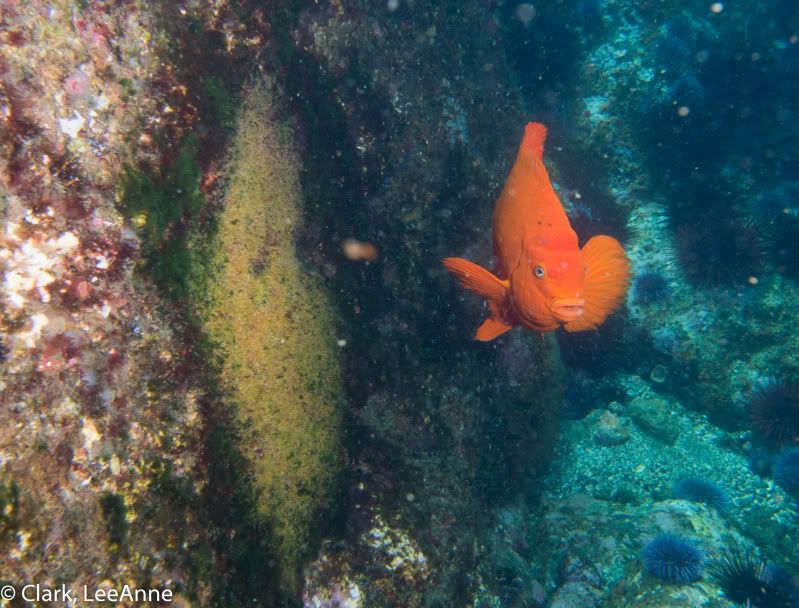
Okay I realize that keyhole lipets are not exactly the most exciting subject, but something about the placement of these two looked to me like…well…boobs!
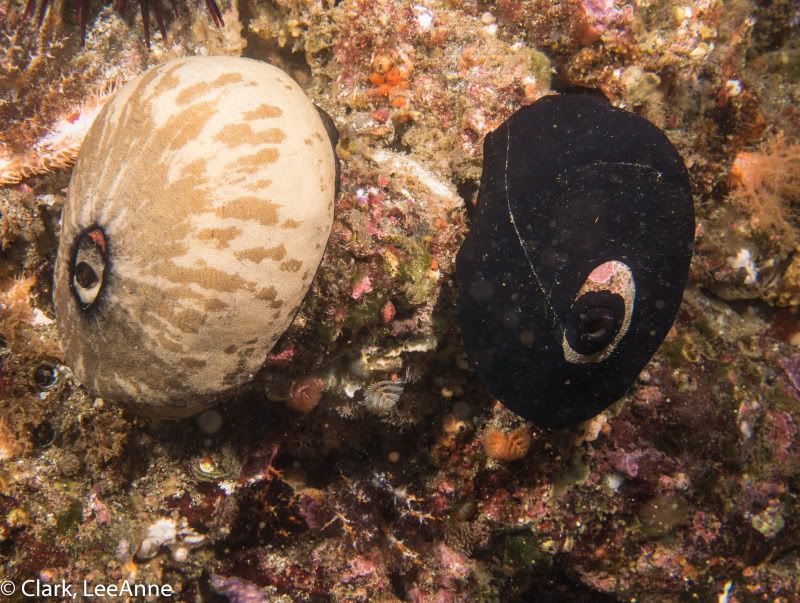
Now that I have a macro lens, I can actually take photos of gobies.
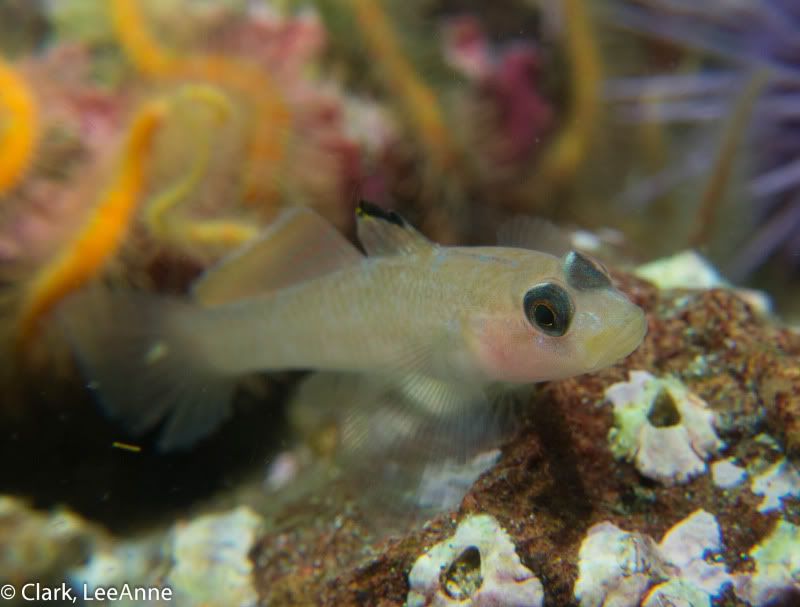
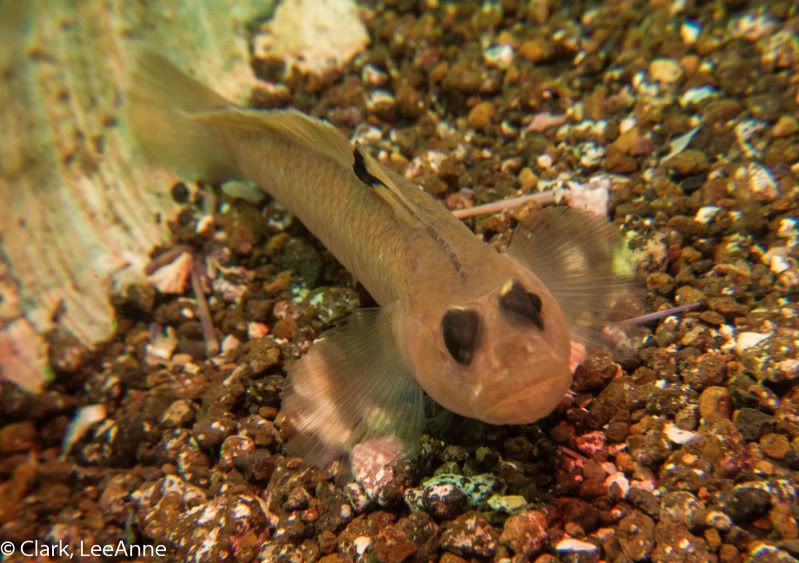
Just playing around with the macro lens

DAY TWO – Gull Island
The moment I dropped down, I realized I was in a nudie extravaganza! Here’s the first one I saw…
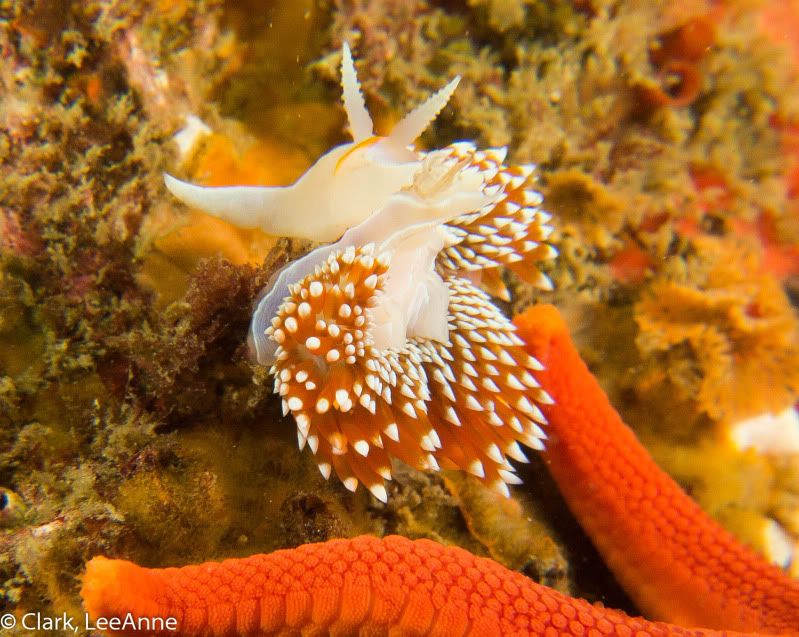
Okay so I’m not a nudie expert, so maybe some of you experts can help me with my identifications.
I *think* this is a Limacia cockerelli – is that correct? Is there a “popular” name for these?
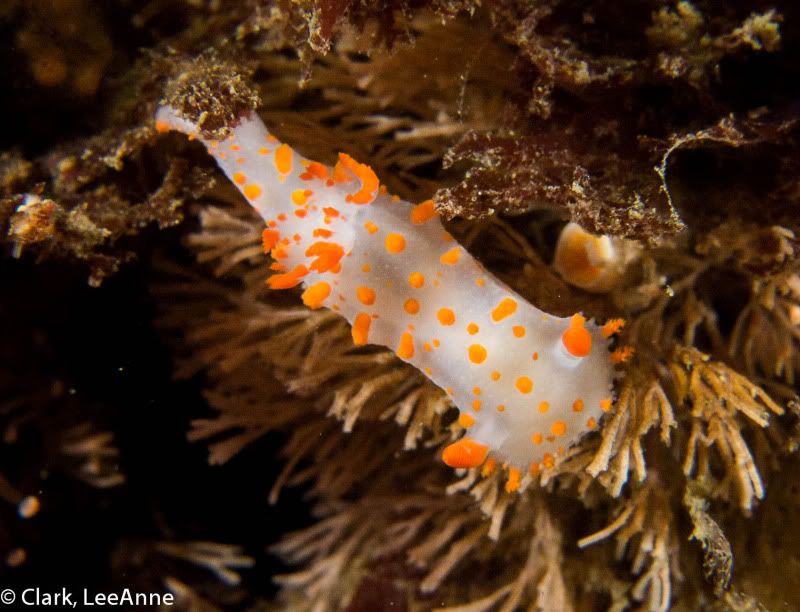
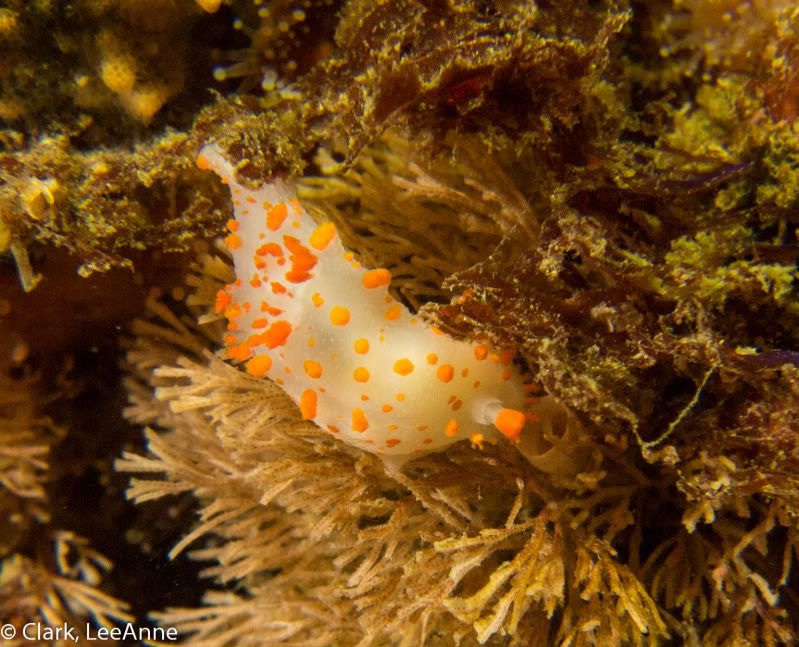
And this is a lemon dorid (Doriopsilla albopunctata) – is that right?
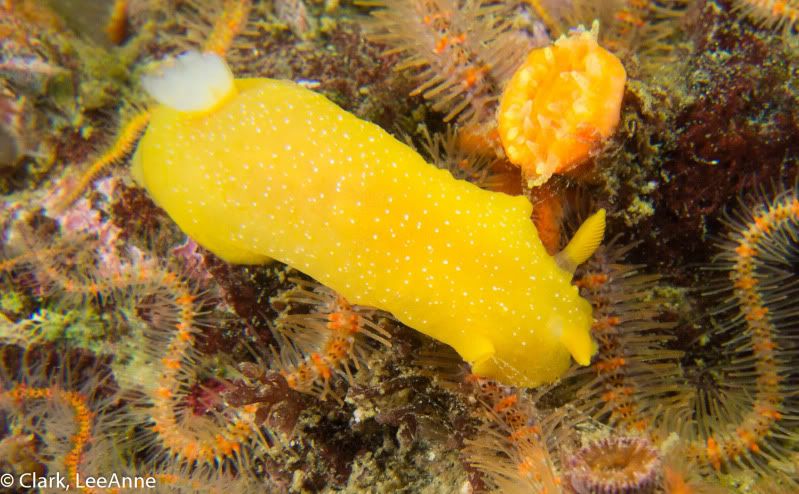
Diaulula sandiegensis, aka San Diego Dorid?
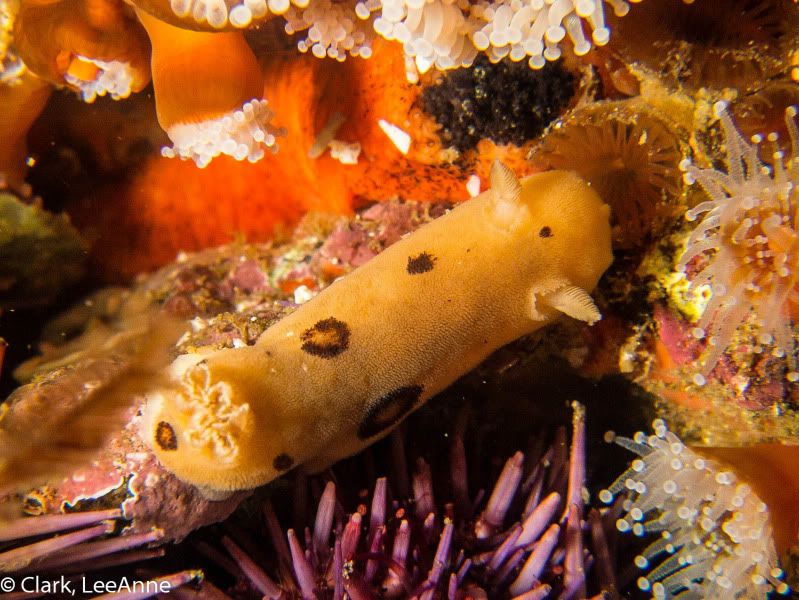

One of my better Hermissenda shots
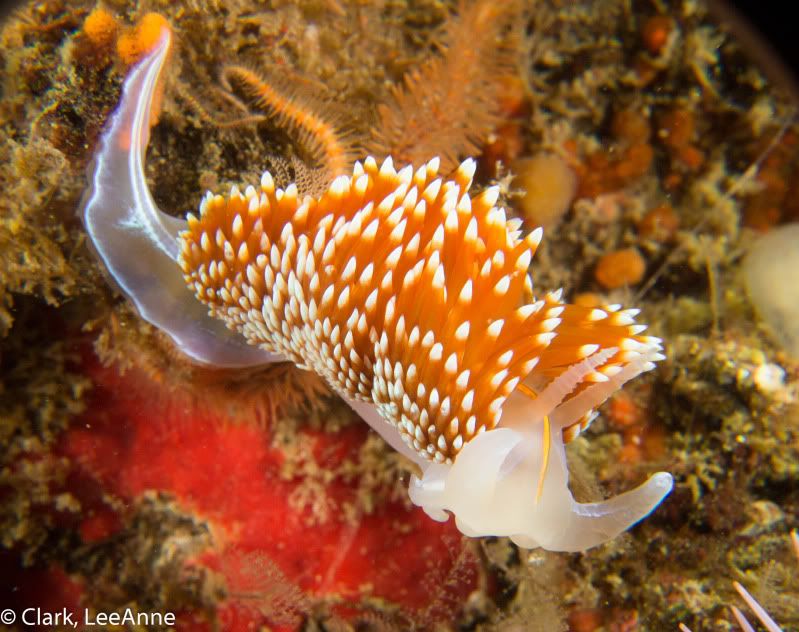
Definitely my best Spanish Shawl shots
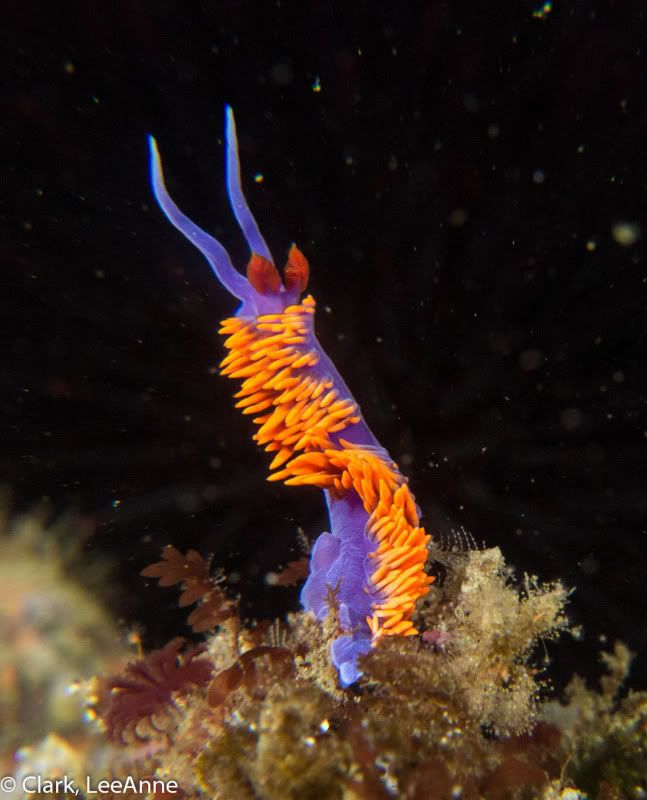
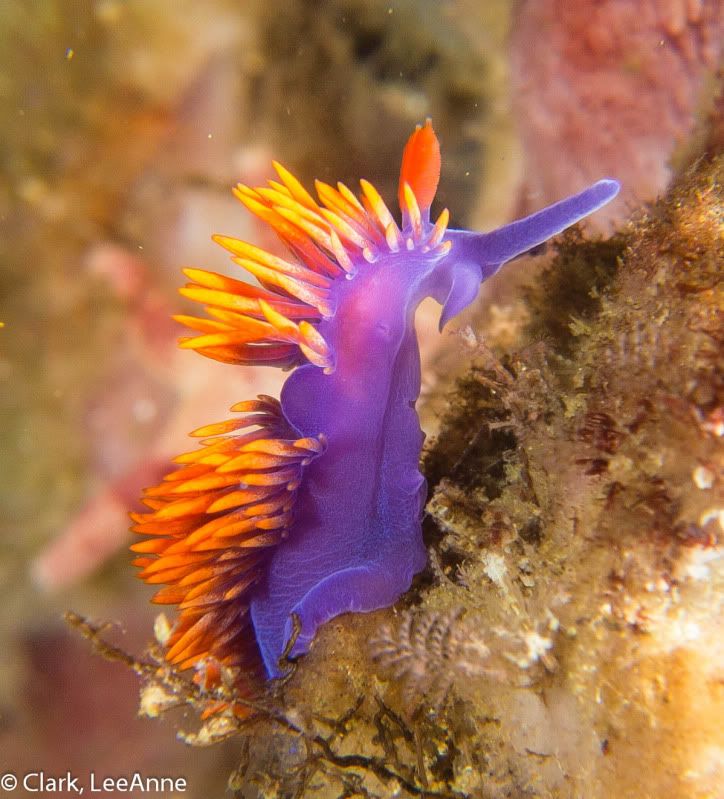
Horn shark – I couldn’t help but wonder, how does he lay down right on top of all those spiny urchins?
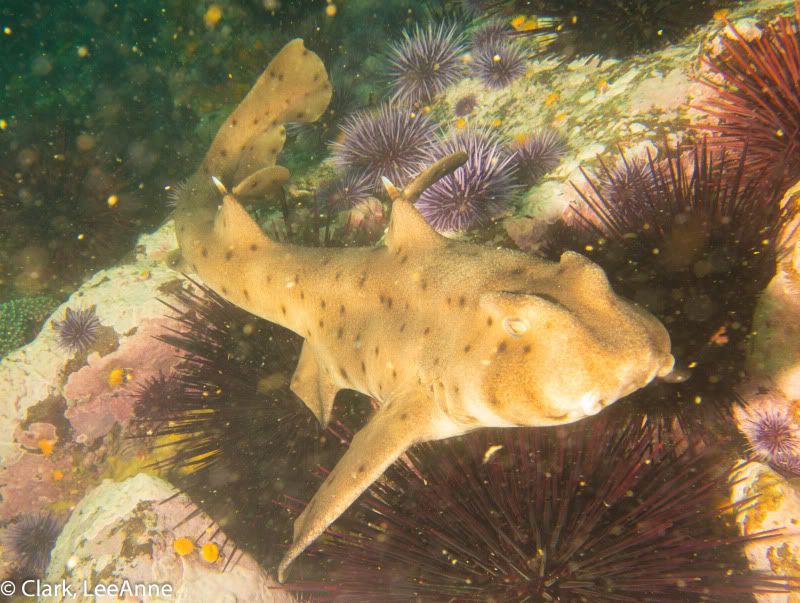
There were TONS of bugs out at Gull Island, and HUGE ones – biggest I’ve ever seen! They clearly have no fear of humans – they would waltz out of their holes right up to my face. This one exited his hole, waved hello, and began marching right in front of me to another hole.
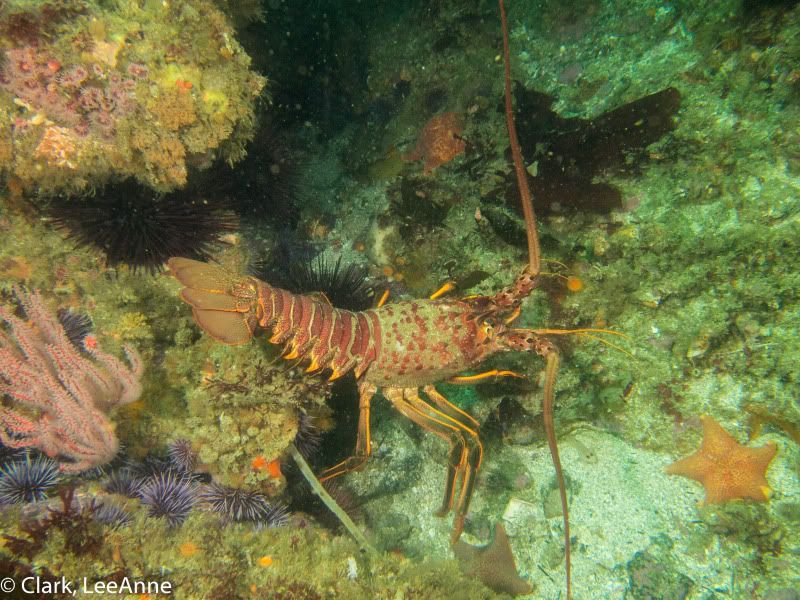
Both days were great – excellent conditions, fantastic boat crew, lovely dives. Unfortunately my product testing didn’t go so well. First, the camera rig: I purchased an Olympus E-PM1 mirrorless camera with all the accoutrements (Olympus housing, fisheye lens & dome port, macro lens, strobes, focus light, etc.). The first time I tried to use my camera few weeks ago, I had problems with the fisheye dome port (it got stuck on the housing) and had to send it back to the manufacturer. I received it back just in time for this trip, but this time, when I took it underwater, the darn thing LEAKED! Fortunately I managed to get back to the surface before much water got in, and swapped it for the original port, which worked fine for the remainder of the dives. So I’m not too pleased with this dome port, and have asked for a replacement.
Second, the heated vest: this was a big gamble for me – I saw them at the scuba show and thought I’d go ahead and try it. I was considering a dry suit, but after this budget-busting camera equipment purchase, I really couldn’t afford one. But this vest sounded like a good, and WAY less expensive, alternative. I don’t know anyone who’s tried them around here, so I figured I’ll be our local guinea pig, and would report back my findings.
I’ll post a more detailed review of it later – short version, the first dive it worked GREAT! But after that, something seems to have failed: it would only go to the lowest of three heat settings. And in the 55 degree water we were diving in, you really need the high setting. The good news is that I spoke to the manufacturer today and they are going to send me a new one. So I want to wait until I get it, and it works a few times, before I post my final product review. I’m hoping this was just one bad unit…suffice to say that if the next one functions the way it’s supposed to, my review will be mostly positive.
Now, on to the dives. Saturday was an open boat trip to Anacapa. I was happy to find a couple people I knew on the boat – Nicole Tibaldi was our DM, and I’ve been diving with her before on Mr. C. Also ran into Rex (diverrex on ScubaBoard). Unfortunately the conditions were undiveable at some of the best sites, down by arch rock – too much surge – so we stayed mostly at the West end, where there just wasn’t a whole lot of life. Still, I managed to get some okay shots.
Spent Saturday night on the boat, and we left at 4am for Gull Island, which is a tiny rock island out past Santa Cruz Island. This was an Eco Dive Center charter. It was an AWESOME day! I knew the sites would be teeming with life, and boy were they!
The crew were fabulous both days, reminding me why Spectre is right up there among my favorite local dive boats. I still find my heart leaping a bit at the gate (Spectre gives new meaning to the term GIANT stride!), but I’m getting used to it. And ya gotta love a boat with a hot tub…especially when the gally crew brings your brownie sundaes TO you while you’re sitting in it!
So, here are a few of my best shots. Please remember that I’m new at this whole underwater photography thing, so try not to compare them to the stunningly artistic work of some of our other frequent posters in here!
DAY ONE - Anacapa
This is the first time I was able to get a shot of a Garibaldi protecting her eggs, in which you can actually see the egg patch.

Okay I realize that keyhole lipets are not exactly the most exciting subject, but something about the placement of these two looked to me like…well…boobs!

Now that I have a macro lens, I can actually take photos of gobies.


Just playing around with the macro lens

DAY TWO – Gull Island
The moment I dropped down, I realized I was in a nudie extravaganza! Here’s the first one I saw…

Okay so I’m not a nudie expert, so maybe some of you experts can help me with my identifications.
I *think* this is a Limacia cockerelli – is that correct? Is there a “popular” name for these?


And this is a lemon dorid (Doriopsilla albopunctata) – is that right?

Diaulula sandiegensis, aka San Diego Dorid?


One of my better Hermissenda shots

Definitely my best Spanish Shawl shots


Horn shark – I couldn’t help but wonder, how does he lay down right on top of all those spiny urchins?

There were TONS of bugs out at Gull Island, and HUGE ones – biggest I’ve ever seen! They clearly have no fear of humans – they would waltz out of their holes right up to my face. This one exited his hole, waved hello, and began marching right in front of me to another hole.






